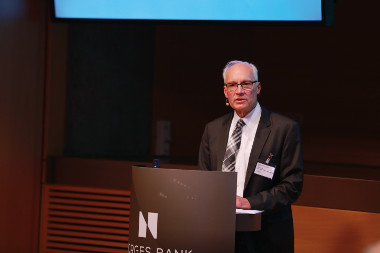Preparing for recession

During the 2008 financial crisis, the Federal Reserve reinvigorated the economy by slashing its benchmark interest rate to zero. Today, as the economy continues to rebound, interest rates are climbing.
But due to shifts in the global economy—in particular, the emergence of China—economists expect slower growth and interest rates to remain low overall. If there’s another financial crisis, inflation will again plummet, taking interest rates down with it.
With rates already low, the Fed won’t be able to cut them further to spur spending. “When interest rates hit an effective lower bound, monetary policy is constrained in its ability to help stabilize the economy,” said Carl Walsh, distinguished professor of economics.
Other safeguards may be needed. Walsh and other economists are evaluating whether central banks should move away from current policies that work to maintain a certain inflation rate. They could instead aim to keep general prices at a certain level or promise to keep future interest rates low. Such forward guidance policies are discussed in a new chapter in the recently published fourth edition of Walsh’s textbook, Monetary Theory and Policy.
If and when another recession hits, investors would expect these price-level targeting policies to bump prices—and inflation—back up, Walsh said. The anticipation of higher inflation coupled with rock-bottom interest rates would incentivize people to borrow and spend, thus stabilizing the economy.

